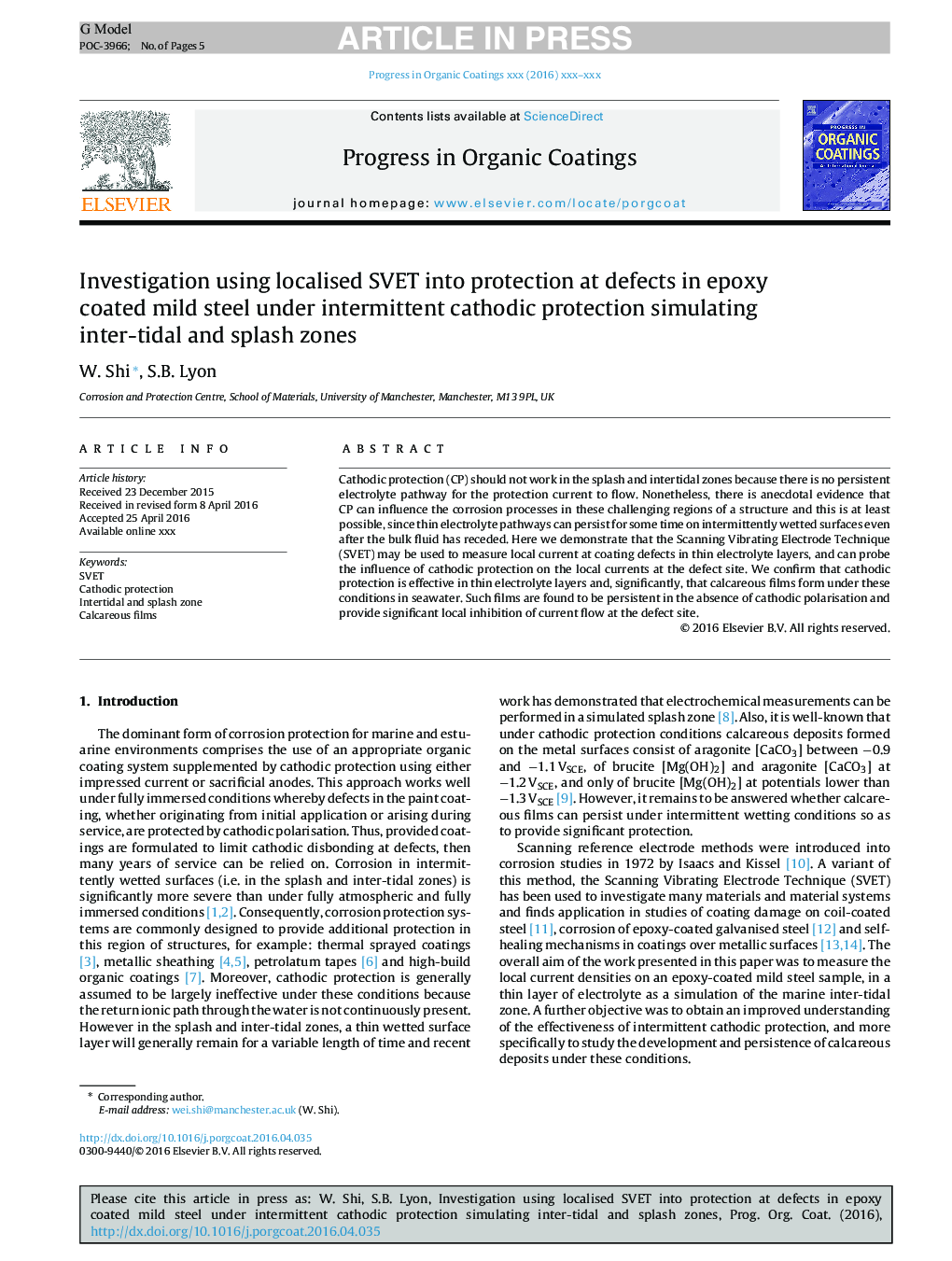| Article ID | Journal | Published Year | Pages | File Type |
|---|---|---|---|---|
| 4999472 | Progress in Organic Coatings | 2017 | 5 Pages |
Abstract
Cathodic protection (CP) should not work in the splash and intertidal zones because there is no persistent electrolyte pathway for the protection current to flow. Nonetheless, there is anecdotal evidence that CP can influence the corrosion processes in these challenging regions of a structure and this is at least possible, since thin electrolyte pathways can persist for some time on intermittently wetted surfaces even after the bulk fluid has receded. Here we demonstrate that the Scanning Vibrating Electrode Technique (SVET) may be used to measure local current at coating defects in thin electrolyte layers, and can probe the influence of cathodic protection on the local currents at the defect site. We confirm that cathodic protection is effective in thin electrolyte layers and, significantly, that calcareous films form under these conditions in seawater. Such films are found to be persistent in the absence of cathodic polarisation and provide significant local inhibition of current flow at the defect site.
Keywords
Related Topics
Physical Sciences and Engineering
Chemical Engineering
Process Chemistry and Technology
Authors
W. Shi, S.B. Lyon,
